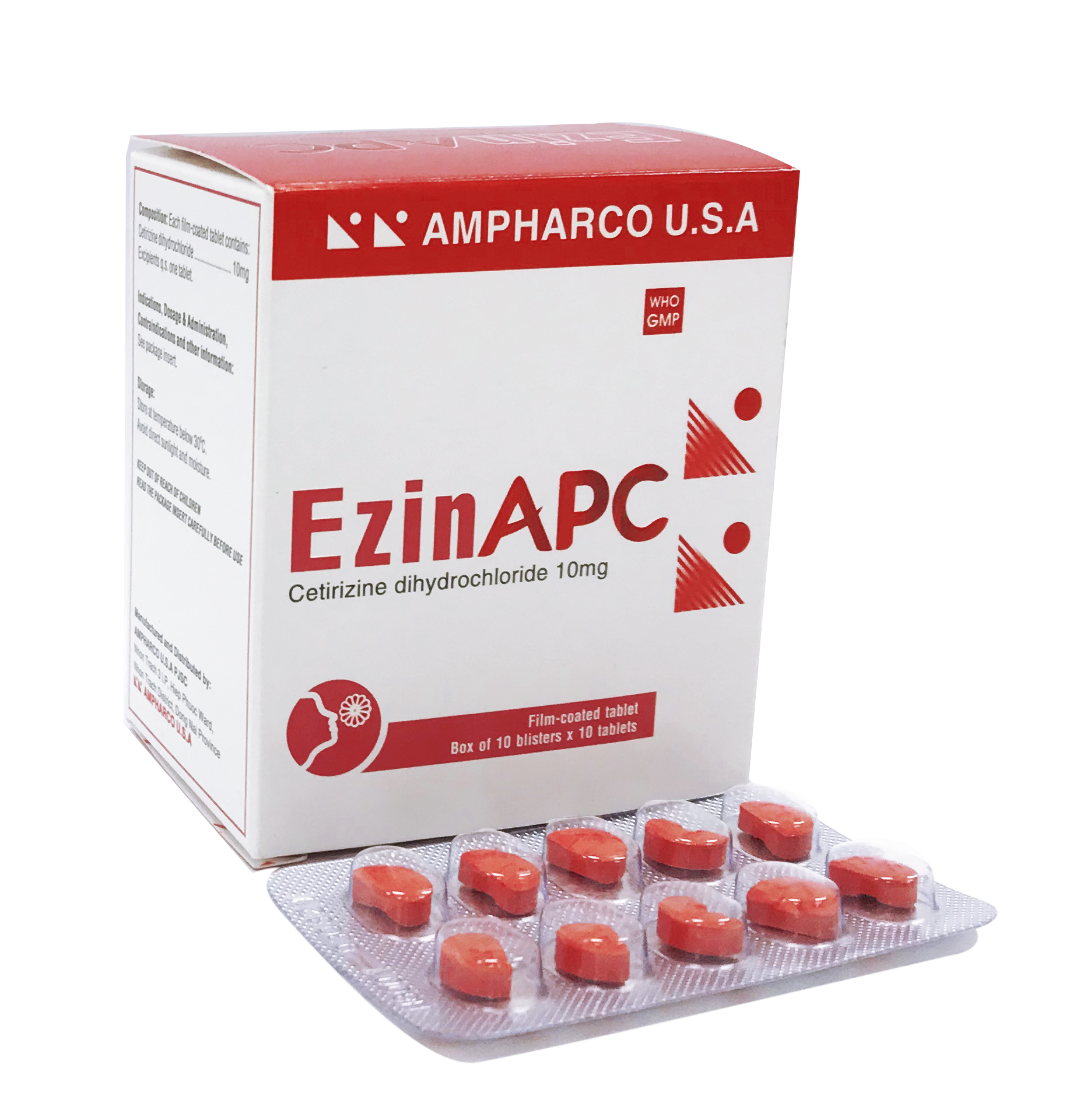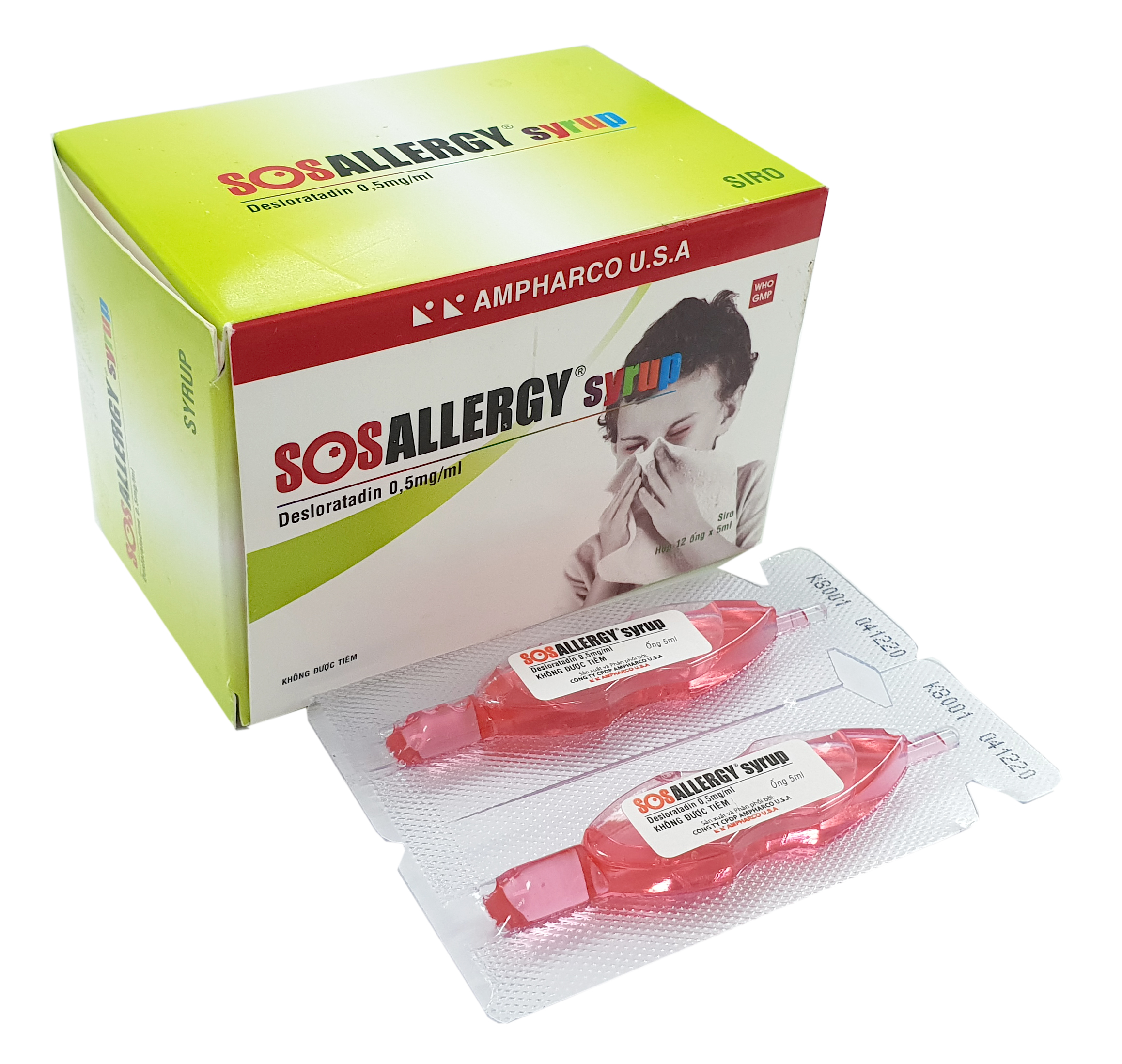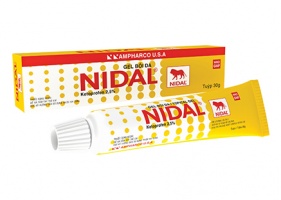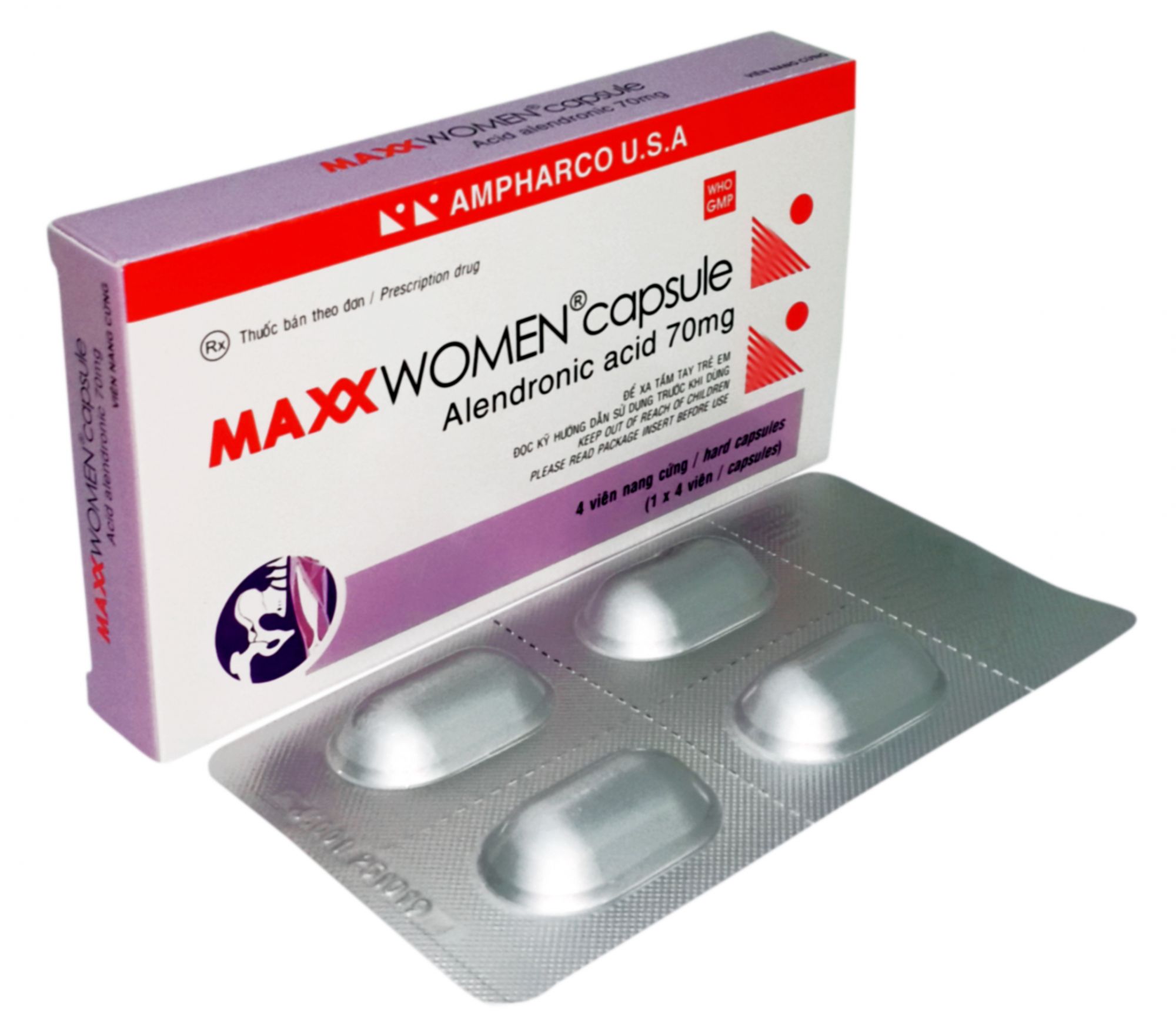- MAXXWOMEN® is indicated for the treatment and prevention of osteoporosis in postmenopausal women. For the treatment of osteoporosis, alendronate increases bone mass and prevents fractures, including those of the hip and spine (vertebral compression fractures).
- MAXXWOMEN® is indicated for treatment to increase bone mass in men with osteoporosis.
Specifications
MAXXWOMEN®
COMPOSITION: Each film-coated tablet contains:
Alendronic acid ……………………..………......70.00 mg
(As Alendronate sodium trihydrate ……………….91.37 mg)
Excipients: Lactose, Microcrystalline cellulose, Croscarmellose sodium, Magnesium stearate, Talc, Opadry II white q.s one tablet.
INDICATIONS:
- MAXXWOMEN® is indicated for the treatment and prevention of osteoporosis in postmenopausal women. For the treatment of osteoporosis, alendronate increases bone mass and prevents fractures, including those of the hip and spine (vertebral compression fractures).
- MAXXWOMEN® is indicated for treatment to increase bone mass in men with osteoporosis.
DOSAGE AND ADMINISTRATION:
Alendronate sodium is administered orally. To facilitate absorption of alendronate, the drug should be taken with a full glass of plain water (180-240 ml) at least 30 minutes before the first food, beverage or other drug of the day. Waiting longer than 30 minutes before eating, drinking or ingesting another drug will improve absorption of alendronate. Even dosing with orange juice or coffee has shown marked reduction of alendronate absorption. Patient should be instructed to avoid lying down for at least 30 minutes following administration of alendronate to facilitate delivery of the drug to the stomach and minimize potential esophageal irritation. Patients should be instructed not to take alendronate at bedtime or before arising for the day.
Treatment of osteoporosis in postmenopausal women: the recommended dosage is 70 mg once weekly.
Prevention of osteoporosis in postmenopausal women:the recommended dosage is 35 mg once weekly.
Treatment to increase bone mass in men with osteoporosis: the recommended dosage is 70 mg once weekly.
Note: No dosage adjustment is necessary for the elderly or for patients with mild to moderate renal insufficiency (creatinine clearance of 35 to 60 ml/ minute).
Alendronate is not recommended for patients with more severe renal insufficiency (creatinine clearance of less than 35 ml/ minute) due to lack of experience.
As there is evidence that alendronate is not metabolized or excreted in the bile, no studies were conducted in patients with hepatic insufficiency. No dosage adjustment is necessary.
CONTRAINDICATIONS:
- Abnormalities of the esophagus which delay esophageal emptying such as stricture or achalasia.
- Inability to stand or sit upright for at least 30 minutes.
- Hypersensitivity to biphosphates or to any excipient listed in the composition.
WARNINGS AND PRECAUTIONS:
Esophageal adverse experiences, such as esophagitis, esophageal ulcers and esophageal erosions, occasionally with bleeding have been reported in patients receiving treatment with oral alendronate. In some cases these have been severe and required hospitalization. Physicians should therefore be alert to any signs or symptoms signaling a possible esophageal reaction and patients should be instructed to discontinue alendronate and seek medical attention if they develop dysphagia, odynophagia, retro-sternal pain. The risk of severe esophageal adverse experiences appears to be greater in patients who lie down after taking oral alendronate and/or who fail to swallow oral alendronate with the recommended full glass (180-240 ml) of water, and/or who continue to take medication after developing symptoms suggestive of esophageal irritation. Therefore, it is very important that the full dosing instructions are provided to, and understood by, the patient.
Because alendronate may cause local irritation of the upper gastrointestinal mucosa, caution should be used when alendronate is given to patients with active upper gastrointestinal problems (such as dysphagia, other esophageal diseases, gastritis, duodenitis, or ulcers).
Hypocalcemia must be corrected before initiating therapy with alendronate. Other disorders affecting mineral metabolism (such as vitamin D deficiency) should also be effectively treated.
Patients should be instructed to take supplement calcium and vitamin D, if daily dietary intake is inadequate.
Severe and occasionally incapacitating bone, joint, and/or muscle pain has been reported in patients taking bisphosphonates that are approved for the prevention and treatment of osteoporosis. Most of the patients were postmenopausal women. The time to onset of symptoms varied from one day to several months after starting the drug. Discontinue use if severe symptoms develop. Most patients had relief of symptoms after stopping.
Osteonecrosis of the jaw (ONJ), which can occur spontaneously, is generally associated with tooth extraction and/or local infection with delayed healing, and has been reported in patients taking bisphosphonates. For patients requiring invasive dental procedures, discontinuation of bisphosphonate treatment may reduce the risk for ONJ. Clinical judgment of the treating physician and/or oral surgeon should guide the management plan of each patient based on individual benefit/risk assessment.
Pregnancy: through its effect on calcium homeostasis and bone metabolism, alendronate can cause damage on the fetus or in newborn children. There are observed cases of dystocia and incomplete bone formation in animal studies. It cannot be excluded that this also is relevant for humans. Due to these problems, alendronate should not be given during pregnancy.
Breast-feeding: it is not known whether alendronate is excreted in human milk. Because many drugs are excreted in human milk, caution should be exercised when alendronate is administered to nursing women.
PRESENTATION: Blister of 4film-coated tablets; catch cover of 1 blister. Box of 1, 3 or 6 blisters.
Keep out of reach of children
Read the package insert carefully before use.
Ask your doctor for further information
Use upon doctor’s prescription only
Manufactured and distributed by: AMPHARCO U.S.A PHARMACEUTICAL JOINT-STOCK COMPANY
Nhon Trach 3 Industrial Park, Hiep Phuoc Ward, Nhon Trach District, Dong Nai Province
Tel: 02513 566 202 - Fax: 02513 566 203







